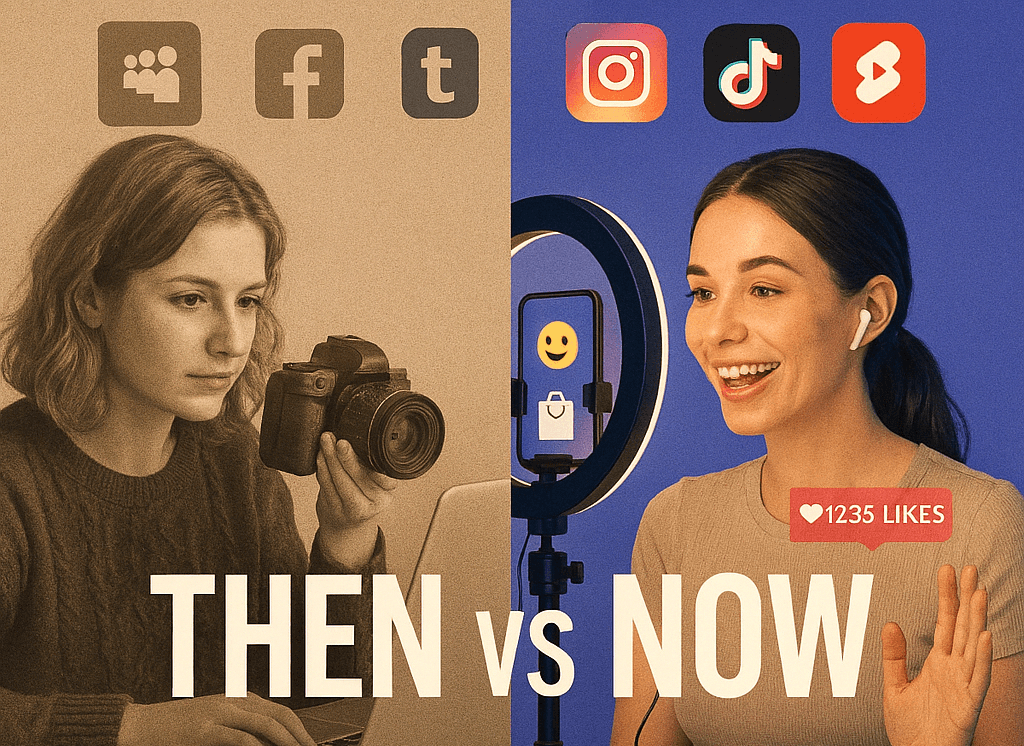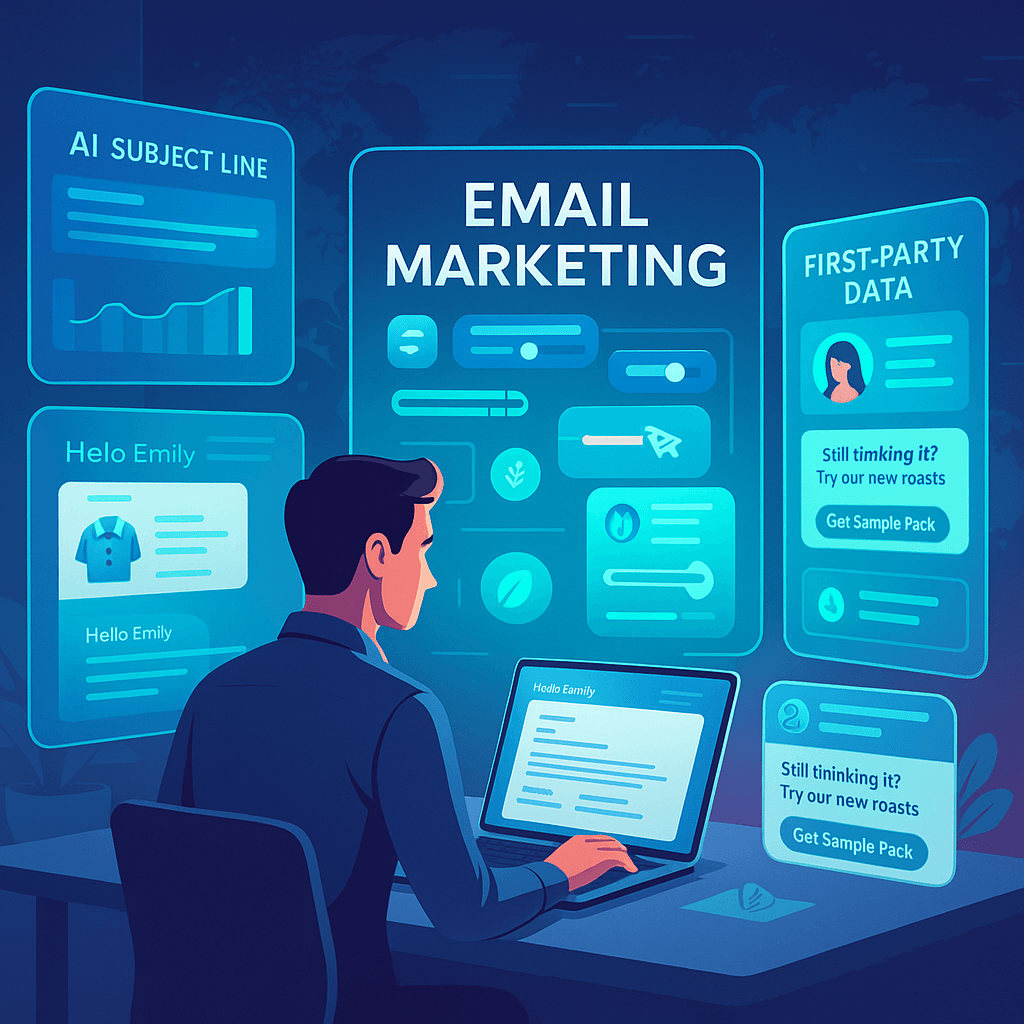Back in 2018, I watched a friend launch a small jewelry business solely through Instagram. With just 2,500 followers, she partnered with a few local micro-influencers and sold out her first collection in 48 hours. That moment changed my perspective on digital marketing forever.
Today, I’m still amazed at how the relationship between social media and influencer marketing continues to transform. Having worked with brands both large and small, I’ve witnessed firsthand how this evolution represents one of the most significant shifts in marketing strategy over the past decade.
Real Connections in a Digital World
I recently interviewed a marketing director who told me something that stuck: “Platforms and influencers are like dance partners now—they need each other to create something beautiful.” This perfectly captures how social media and influencer have developed a deeply interdependent relationship.
During my visit to Creator Week in Miami last year, I watched platform representatives literally court creators with new features and monetization opportunities. Meanwhile, creators huddled in corners strategizing about algorithm changes and cross-platform growth. The symbiosis was palpable.
The Neighborhood Influencers
My neighbor Emily has just 8,000 Instagram followers, but when she recommends a local restaurant, they invariably see a surge in reservations. This is the micro-influencer effect I’ve observed repeatedly while researching this field.
“My audience feels more like friends than followers,” Emily told me over coffee last month. “When I recommend something, they know I genuinely love it because I’ve built that trust.” Her engagement rates consistently hover around 12%—numbers that make macro-influencers envious.
The Power of “Real People” Content
Last summer, I was part of a marketing team that tested professionally produced ads against UGC (user-generated content) from everyday customers. The results floored us: the amateur videos outperformed the professional content by 38% in conversion rate.
One customer’s shaky, imperfectly lit video of unpacking her skincare order—complete with her genuine excitement—created more sales than our carefully crafted studio shots. There’s something magnetic about authenticity that polished marketing often misses.
Beyond the Numbers Game
“I used to obsess over follower counts,” admitted a brand manager I interviewed for this piece. “Now I’d rather have 100 passionate fans than 10,000 passive scrollers.”
During a recent workshop I conducted with small business owners, we analyzed campaign data that repeatedly showed this pattern. One participant’s collaboration with a 5,000-follower TikTok creator generated more sales than their partnership with a celebrity with millions of followers—at a fraction of the cost.
Shopping Without Leaving the Feed
I still remember the frustration of seeing products I loved on social media years ago and having to search multiple websites to find them. Now, my personal shopping habits have completely changed.
Just last week, I purchased a cookbook directly through an Instagram Story after watching a food creator I follow make one of its recipes. Three taps and it was on its way to my door. This streamlined journey from inspiration to purchase represents a fundamental shift in how we shop.
Platform-Specific Playbooks
Working with an activewear brand last quarter taught me that successful social media marketing strategies require nuanced, platform-specific approaches. Their TikTok content—energetic, trend-based workout clips—bombed spectacularly when directly reposted to LinkedIn, where their audience expected industry insights and company culture stories.
“We’ve completely abandoned the one-size-fits-all approach,” their marketing lead told me. “We now think of each platform as a different neighborhood with its own culture and language.”
The Transparency Revolution
At a recent industry conference, I was struck by how the conversation around disclosure has evolved. “We used to try hiding the #ad hashtag,” a veteran influencer confessed during a panel discussion. “Now we highlight our partnerships because audiences respect honesty.”
This shift represents growing maturity in the field. Brands I’ve consulted with have found that transparent partnerships, when executed with integrity, actually strengthen consumer trust rather than diminishing it.
Creators and AI: Complicated Partners
Last month, I sat with a creator who showed me how she uses AI tools to brainstorm content ideas while maintaining her unique voice in the actual execution. “It’s like having an assistant who knows what works but can’t replace my personal experience,” she explained.
This balance—using technology as an enhancer rather than a replacement for human creativity—seems to be where the most successful creators are landing.
Where We’re Heading
Based on conversations with industry insiders and my own observations working in this field, several social media marketing trends appear to be gaining momentum:
The brands I work with are increasingly shifting budget from one-off campaigns to year-long creator partnerships. As one CMO told me, “We’re building relationships, not just running ads.”
Vertical video dominates everywhere now. I’ve watched historically horizontal platforms like YouTube and LinkedIn pivot hard toward short-form vertical content, following the trail blazed by TikTok.
The AR functionality I’ve tested in recent campaigns suggests we’re just scratching the surface of what’s possible with virtual try-ons and interactive content.
Final Thoughts
Having witnessed the evolution of this space from its early days to its current sophistication, I believe we’re entering the most exciting phase yet. The relationship between platforms, creators, brands, and audiences has never been more dynamic.
As someone who works at this intersection daily, my advice to brands remains consistent: view creators not as mere marketing channels but as strategic partners who understand their audiences in ways traditional research never could.
The digital landscape will continue changing, but authentic connections will always be the currency that matters most. That’s something both my most successful clients and the platforms themselves have finally come to understand.





